Maximizing the benefits of training engineers about gender
Maximizing the benefits of training engineers about gender
Maximizing the benefits of training engineers about gender
Create successful ePaper yourself
Turn your PDF publications into a flip-book with our unique Google optimized e-Paper software.
EWB-UK Research Conference 2009Hosted by The Royal Academy <strong>of</strong> EngineeringFebruary 20Developing new <strong>training</strong> techniquesA research project carried out by WEDC has developed a way <strong>of</strong> <strong>training</strong> <strong>engineers</strong> at work, thatfocuses on what <strong>engineers</strong> think <strong>about</strong>, not <strong>the</strong> social science. Mainstreaming <strong>gender</strong> does notmean that <strong>engineers</strong> become social scientists, but that <strong>the</strong> technical activities are carried out withan awareness <strong>of</strong> social science issues. Engineers are still primarily responsible for technical activitiesand social scientists for community work, but working toge<strong>the</strong>r to a common goal. Consider such adelicate matter as <strong>the</strong> disposal <strong>of</strong> sanitary towels during menstruation; <strong>the</strong> disposal <strong>of</strong> <strong>the</strong> waste istechnical (requiring engineering skills), but <strong>the</strong> subject area is very difficult to discuss with <strong>the</strong> users(requiring social skills).The research methodologyThe project started <strong>of</strong>f with a conventional <strong>training</strong> programme; this focused on <strong>the</strong> social sciencera<strong>the</strong>r than engineering issues. Problems occurred though with attracting <strong>engineers</strong> to attend <strong>the</strong>programme. One workshop that did engage with technical staff showed that, whilst <strong>the</strong> <strong>engineers</strong>were aware <strong>of</strong> <strong>gender</strong> issues, <strong>the</strong>y did not have <strong>the</strong> technical responses required. A case was given<strong>of</strong> a project where a woman had been appointed caretaker <strong>of</strong> a water system, but she was unable toclimb <strong>the</strong> water tower to maintain it as she wore a sari (long dress). The problem was a technicalone, as <strong>the</strong> <strong>engineers</strong> did not know how to re-design <strong>the</strong> water tower to suit <strong>the</strong> user. The focusshifted from looking at “<strong>gender</strong>” activities to looking at what <strong>engineers</strong> do in <strong>the</strong>ir day-to-day job.Following this workshop, a series <strong>of</strong> courses were held with a range <strong>of</strong> technical staff, to test a newapproach to <strong>training</strong> <strong>engineers</strong> <strong>about</strong> <strong>gender</strong>, using lots <strong>of</strong> discussion with <strong>the</strong> participants to seewhat <strong>the</strong>ir views were. In one case, discussing <strong>the</strong> issues with managers from Nigerian waterutilities, <strong>the</strong> rights based approach was welcomed by <strong>the</strong> women on <strong>the</strong> course, but was treatedwith opposition by <strong>the</strong> male participants. A pragmatic, customer based approach however, whilstnot as emotive, was accepted by all as a positive way forward.The <strong>training</strong> methodologyThe <strong>training</strong> developed has some underlying principles that make this approach different fromstandard <strong>gender</strong> courses.Reasons for considering womenThe rights-based approach did not appear to be relevant to <strong>the</strong> work <strong>engineers</strong> carried out, so <strong>the</strong>reasons for considering <strong>the</strong> needs <strong>of</strong> women are based around meeting customers’ needs, projectefficiency and effectiveness. It was important to capture <strong>the</strong> engineer’s imagination to make <strong>the</strong>mwant to take action. This is founded in one <strong>of</strong> <strong>the</strong> early definition <strong>of</strong> civil engineering, namely:‘<strong>the</strong> art <strong>of</strong> directing <strong>the</strong> great Sources <strong>of</strong> Power in Nature for <strong>the</strong> use and convenience <strong>of</strong> manCommunity <strong>of</strong> Practice: (water and sanitation)Author: Brian Reed and Sue CoatesInstitution: WEDC Loughborough UniversityPreviously published: 31st WEDC International Conference, Kampala, Uganda, 2005(Thomas Tredgold 1827)This is supported by research by Narayan (1995) that showed that participative projects were moresuccessful than non-participative projects. Research shows that women are consistently <strong>the</strong> maincollectors <strong>of</strong> water in non-commercial situations. Women are <strong>the</strong>refore required on decisionmakingcommittees, not to fill a quota, but to provide specific direction to <strong>the</strong> engineering process.The first step is getting <strong>the</strong>m on committees; <strong>the</strong> second step is <strong>engineers</strong> actually engaging with



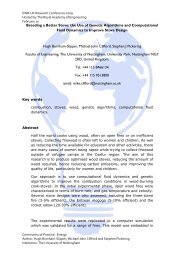

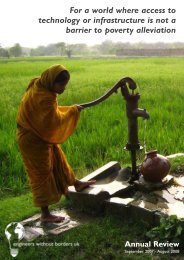
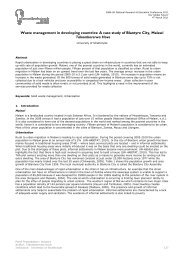
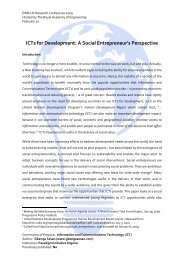
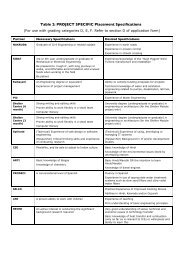





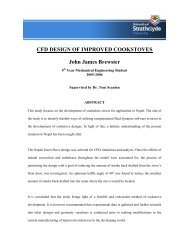
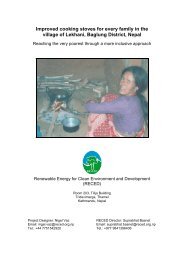
![Ethical Fundraising Guidance[1].pdf - Engineers Without Borders UK](https://img.yumpu.com/36288951/1/184x260/ethical-fundraising-guidance1pdf-engineers-without-borders-uk.jpg?quality=85)